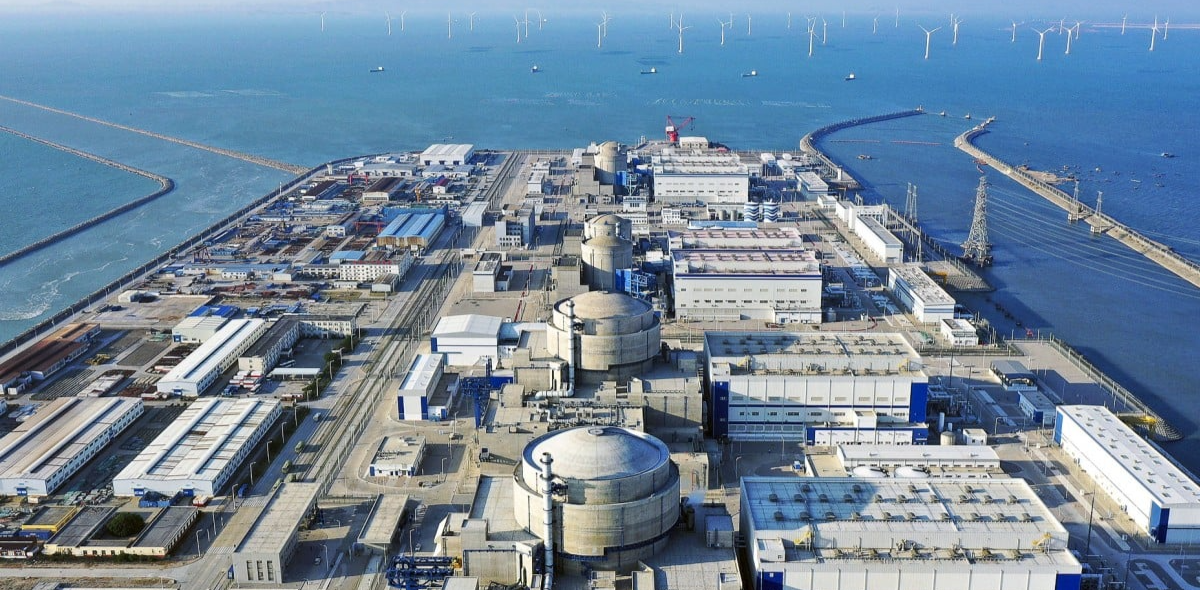China's 3rd-Gen Nuclear Unit Sets Record with Perfect Safety, Performance

In a remarkable milestone for China’s nuclear power industry, the self-designed and constructed third-generation nuclear power unit, HPR1000 has achieved a perfect score in the World Association of Nuclear Operators (WANO) comprehensive index in February 2024. This accomplishment signifies that the production and operational performance of HPR1000 has excelled on a global scale, thereby validating the safety and advanced nature of China’s self-developed third-generation nuclear power technology.
The WANO comprehensive index serves as a globally recognized standard established by the World Association of Nuclear Operators to evaluate the comprehensive performance of nuclear power units. Its primary function is to provide a quantitative assessment of the overall performance of nuclear power plants across various aspects, including nuclear safety, power generation management, maintenance optimization, equipment reliability, and industrial safety.
In addition to the outstanding performance of the HPR1000 unit, China Nuclear Power, the state-own-enterprise who builds and operates nuclear plants, has demonstrated exceptional operational prowess. A total of 18 units under its management successfully attained a full score in the WANO comprehensive index. Furthermore, the average value for the 25 units that met the WANO comprehensive index conditions stood at an impressive 98.22. These achievements underscore China’s continued leadership in operational performance within the global nuclear power industry.
In recent years, the quest for cleaner, safer, and more efficient energy sources has led to significant advancements in nuclear power technology. Among these, 3rd generation nuclear power plants stand out as a beacon of innovation. These plants are designed to succeed the 2nd generation reactors, bringing evolutionary improvements that promise to reshape the landscape of nuclear energy.
Enhanced Safety Systems
One of the most significant advantages of 3rd generation nuclear power plants is their enhanced safety systems. These plants feature passive safety measures that can operate without human intervention, reducing the risk of accidents. The core damage frequencies for these reactors are designed to be lower than for Generation II reactors.
Improved Fuel Technology and Efficiency
3rd generation reactors utilize improved fuel technology, which allows for higher thermal efficiency. This means they can generate more electricity from the same amount of nuclear fuel compared to their predecessors, making them more economical and reducing waste.
Currently, every year, the HPR1000 requires just around 30 tons of nuclear fuel to generate an impressive amount of electricity. This output is equivalent to the power produced by a staggering 30 million tons of coal, providing enough electricity to satisfy the demands of a bustling city with a population of ten million. And China is ready to export this latest technology to the world.
Standardized Designs
Standardization is another key benefit of 3rd generation reactors. By standardizing designs, these plants can reduce maintenance and capital costs. This also expedites licensing and construction time, leading to quicker deployment and scalability.
Longer Operational Life
Designed for 60 years of operation and extendable to over 100 years, 3rd generation reactors offer a longer operational life than the 40 years typical of Generation II reactors. This longevity translates to sustained energy production and a better return on investment.
Economic and Environmental Benefits
The 3rd generation nuclear power plants are not only more fuel-efficient but also contribute to economic growth by creating jobs and supporting local economies. They also play a crucial role in reducing carbon emissions, helping to combat climate change.
Specifically, HPR1000’s several innovative designs contribute to its outstanding performance. At the heart of the nuclear reactor lies a core filled with uranium fuel, carefully placed inside metal tubes measuring approximately 4 meters in length. This fuel undergoes processing to create fuel pellets with an enrichment level of about 3%-5%, which are then loaded into metal tubes to form fuel rods. An impressive 264 of these fuel rods are bundled together to create a single fuel assembly, and a total of 177 assemblies are further combined to form the powerful reactor core.
When compared to traditional reactor cores, the HPR1000 core stands out due to its higher number of fuel assemblies. This unique feature not only results in a greater overall power output but also enables a reduction in the heat generation of individual components, ultimately enhancing the overall safety of the reactor.
In addition to the solid fuel rods within the HPR1000 fuel assemblies (the nuclear fuel), 24 hollow guide tubes are designed to house special metal rods. Some of these metal rods, known as neutron source rods, produce neutrons to “ignite” the reactor. Others, called control rods, absorb neutrons and regulate the reaction rate. By precisely adjusting the position of the control rods, the nuclear reactor can be maintained in a “critical state,” where the number of neutrons consumed in each fission reaction equals the number of newly generated neutrons, allowing the reaction to proceed continuously and stably. Under the stable influence of the control rods, water is used as a coolant to remove heat from the core, generating high-temperature steam to drive turbine rotation. This, in turn, powers the generator to produce electricity, delivering the energy from atomic nuclei constantly to meet people’s demand for electricity.
However, while nuclear reactions can generate unlimited energy, they also produce various types of radiation. To ensure the safe operation of the nuclear reactor, a stringent protective system must be established.
To safeguard the nuclear zone’s security, HPR1000 has implemented three layers of physical barriers. The first barrier consists of metal tubes encasing the uranium fuel pellets, capable of intercepting over 98% of radioactive materials. The second barrier is the pressure vessel and piping, featuring a wall thickness of up to 22 cm, designed to withstand immense pressure. The third barrier is a double-layered concrete safety shell, with both inner and outer layers exceeding 1 meter in thickness, providing robust protection for the entire nuclear island.
Moreover, HPR1000 boasts various advanced safety systems. In the event of an emergency situation, the system can instantly insert all control rods to achieve rapid shutdown. The emergency boron system and the safety injection system can absorb neutrons, perform emergency shutdowns, and cool down the reactor core in critical moments. These safety systems have multiple redundancies, ensuring that if one component fails, other systems can quickly take over to maintain the safety of the nuclear power plant.
HPR1000 already makes its way into the global market. Pakistan has become the first foreign host of it. The collaboration between China and Pakistan in the field of nuclear energy has yielded remarkable results, starting with the Chashma Nuclear Power Plant Unit 1, which has been hailed as an exemplary model of “South-South cooperation.” This successful venture has paved the way for Pakistan’s first-ever million-kilowatt-level nuclear power project, the K-2/K-3 project.
Through joint efforts, the two nations have erected two major nuclear power bases, housing a remarkable total of six nuclear power units. These facilities not only symbolize the fruitful partnership but also cater to Pakistan’s growing demand for clean and stable electricity supply.
In the coming years, the HPR1000 nuclear reactor is poised to be deployed in more nations globally, representing another key technology export from China following the success of high-speed rail.
As China continues to strengthen its partnerships through its Belt and Road Initiative, the safe, reliable energy the HPR1000 provides could help power economic development in partner countries for decades to come. Just as Chinese high-speed rail technology has transformed infrastructure across Asia and beyond, the HPR1000 stands to bolster energy security worldwide while reinforcing China’s reputation as a driver of clean, sustainable progress.





